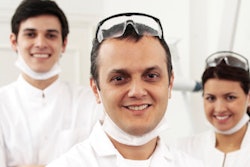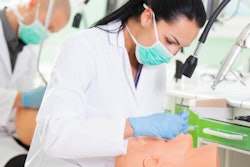
In 1840, the Baltimore College of Dentistry became the first dental school founded in the U.S., but what if it had become part of a medical school instead?
Dr. R. Bruce Donoff, former dean of the Harvard School of Dental Medicine, posed that very question during his presentation on September 13 at the 231st Meeting of the National Advisory Dental and Craniofacial Research Council. He alluded that an early partnership between dentistry and medicine could have changed the trajectory of healthcare.
There have been attempts at medical-dental education through the years, Donoff reported. The "Gies Report," written in 1926, stated that dentistry should coexist with medicine as a separate but integrated entity. William J. Gies, author of the "Gies Report," was a biochemist at Columbia, and his efforts were halted by the First District Dental Society of New York City.
In the 1930s and early 1940s, Dean Milton Winternitz of Yale Medical School developed an MD program for dentists. He believed that the degree would improve dental students' knowledge and ability to do research. Although the program was cut short by World War II, some noteworthy dentists graduated from the program.
"I want to use that to emphasize the fact that experiments are important and pilot programs are important," Donoff said.
Of the individuals who graduated from Yale's program, Lester Burket went on to start oral medicine at the University of Pennsylvania. Seymour Kreshover later became director of the National Institute of Dental Research. David Weisberger became a leader in oral cancer detection and later taught Donoff at Harvard University.
In another example Donoff gave, Harvard University, Donoff's alma mater for both his dental and medical degree, was the first to confer the Dentariae Medicinae Doctoris (DMD) degree, which emphasizes the medicine aspect of dentistry over surgery. In 1940, Harvard offered every student attending dental school an MD or a DMD -- a failed experiment.
In 1971, Harvard's Massachusetts General Hospital's oral and maxillofacial surgery residency program began. And in the late 1980s and early 1990s, five dental schools closed, including prestigious schools at Washington University and Georgetown University.
Dentistry is at a crossroads
In 2017, a modern version of the 21st century "Gies Report" was released, with support from the American Dental Education Association, the ADA, and other prominent dental groups. While the report was substantial, it led to little change.
The fate of the modern "Gies Report" was a disappointment but not a surprise to those familiar with medical-dental integration. In 1995, a report called "Dental Education at the Crossroads" offered recommendations for changes to stabilize the dental curriculum, but the report was read by less than 15% of people in the health profession, according to Donoff.
Even more recently, the "Oral Health in America" report, the sequel to the U.S. Surgeon General's report on oral health, was delayed. It was eventually published in late 2021, not by the Surgeon General but by the U.S. National Institute of Dental and Craniofacial Research.
New developments at dental schools are signaling that the winds might be changing for the future direction of dentistry. In 2003, Arizona started a dental school that was the first to emphasize public health in its curriculum, according to Donoff.
Donoff drew the audience's attention to the fact that Arizona's program came to be because of the desire of applicants, not necessarily the desires of academics or administrators, and other educational institutions have followed suit. Since Arizona's school opened, most new dental schools have been predominantly osteopathic-associated schools, with very few university-based dental schools.
A fitting example of the changing tides in dentistry concerns vaccinations. In 2018, the ADA adopted a policy urging dentists to encourage HPV vaccination to which Donoff asked, "Why don't dentists give HPV vaccinations?"



















